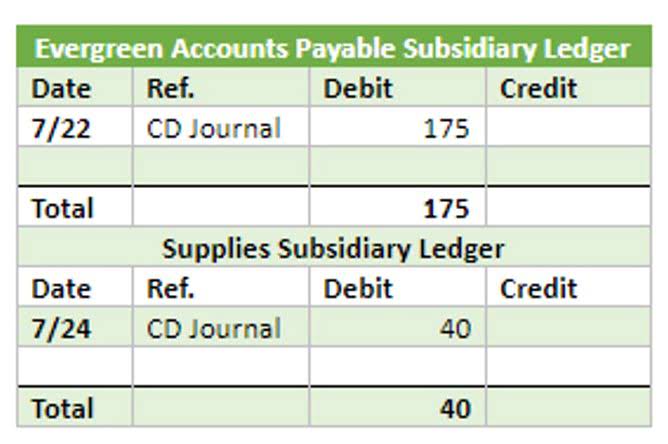
In accounting, an expense is any cost your business incurs to generate revenue. You report expenses on your company’s income statement, or profit and loss (P&L) statement, and record them as revenue deductions. At the end of the accounting period, the company needs to accrue salary expenses on the income statement. The journal entry is debiting salary expense $ 50,000 and credit salary payable $ 50,000. The tracking and monitoring of both ensure compliance and streamline operations even further with accurate record keeping.
Example of how payroll liabilities work
For instance, your utility bills are an expense and a liability in the bookkeeping. When you pay for the bill, the bank balance reduces and settles the liability. These articles and related content is the property of The Sage Group plc or its contractors or its licensors (“Sage”). Accordingly, Sage does not provide advice per the information included. These articles and difference between expenses and liabilities related content is not a substitute for the guidance of a lawyer (and especially for questions related to GDPR), tax, or compliance professional.

Financial Impact
- Liabilities often appear on the balance sheet, affecting the company’s assets and equity, while expenses appear on the income statement, directly impacting net income.
- Payroll expenses differ quite significantly from payroll liabilities, yet most people are unaware of the subtle distinctions between the two.
- They reflect a decrease in economic benefits during an accounting period.
- Companies of all sizes finance part of their ongoing long-term operations by issuing bonds that are essentially loans from each party that purchases the bonds.
- The expense is the recognition of the cost, while the liability is the formal recognition of the duty to pay for that cost later.
- Managing payroll is one of the top challenges for small business owners, according to a Justworks and The Harris Poll survey.
Our content is not intended to provide legal, investment or financial advice or to indicate that a particular Capital One product or service is available or right for you. Nothing contained herein shall give rise to, or be construed to give rise to, any obligations or liability whatsoever on the part of Capital One. For specific advice about your unique circumstances, consider talking with a qualified professional. Products and services are offered by Capital One, N.A., Member FDIC. Assuming Mr. A does not make the payment of rent immediately but his landlord allows him a period of 2 months to make the payment. In such case when the expense is recorded, a liability amounting to $500 will be created in favor of the landlord.
- Other line items like accounts payable (AP) and various future liabilities like payroll taxes will be higher current debt obligations for smaller companies.
- Or they might be goods and services that you’ve received but not yet been invoiced for by the supplier.
- It allows individuals and businesses to analyze spending patterns, control costs, and make informed budgetary decisions to achieve financial goals.
- Salary payable is an amount an employer has promised to pay their employees for employment rendered during a certain period of time.
- What’s the difference between a business expense and a business liability?
- We have helped accounting teams from around the globe with month-end closing, reconciliations, journal entry management, intercompany accounting, and financial reporting.
- By accurately tracking expenses, business owners have a clearer picture of their profitability and efficiency.
Liabilities and assets
An organization will incur a variety of costs that cannot be ignored. Taxes are generally considered a short-term obligation, but there are occasions when they can be delayed for more than one year. We’ll break down everything you need to know about what liabilities mean in the world of corporate finance below. She has held multiple finance and banking classes for business schools and communities.

Payroll Expense Vs. Payroll Liability
They represent the costs incurred by a business during its normal operations to generate revenue. Expenses can be categorized into various types, such as cost of goods sold, operating expenses, and non-operating expenses. Understanding how liabilities and expenses affect financial statements is crucial for accurate reporting. Liabilities are recorded on the balance sheet and impact assets and equity. The distinction between these two accounts is important to understand when accounting for employee payments.
Paid time off (PTO)
I define each account type, discuss its unique characteristics, and provide examples. Try FreshBooks for free by signing up today and getting started on your path to financial health. Liabilities and equity are listed on the right side or bottom half of a balance sheet. In this article, we see what these two items are, whether https://pureaudiopulse.co.za/bookkeeping-cleanup-checklist-tips-and-effective/ expenses are liabilities, and their comparison to show the areas in which they differ. Charlene Rhinehart is a CPA , CFE, chair of an Illinois CPA Society committee, and has a degree in accounting and finance from DePaul University.

Accrued expenses are expenses that have been incurred but the payment has not been made yet. Accrued expenses are recorded as part of the month-end close process, after the accounts payable have been closed. Let’s explore an example of how to account for accrued vacation expenses, which is a common type of accrued liability. Record expenses Accounts Receivable Outsourcing and liabilities on different financial statements.
- For instance, receiving upfront payment for a service creates an unearned revenue liability; only when the service is delivered does that liability convert into revenue.
- Likewise, increasing assets increases equity, but a decrease in assets lowers equity.
- This means that while expenses directly influence your cash flow and profitability, liabilities can affect your financial health over time without an immediate impact on earnings.
- Accounts payable typically involves short-term obligations due within a specific period.
When a business uses the Accrual basis accounting method, the revenue is counted as soon as an invoice is entered into the accounting system. As you can see, owner or shareholder equity is what is left over when the value of a company’s total liabilities are subtracted from the value of its assets. Fixed assets, or non-current assets, are tangible assets with a life span of at least one year and usually longer.

Settle Salary Payable
Liabilities are obligations owed to others, representing future sacrifices of economic benefits. Expenses, conversely, are the costs consumed or incurred in the act of earning revenue. This means a liability is a “what you owe” at a specific moment, while an expense is a “what you’ve used up” over a period.

Leave a Reply